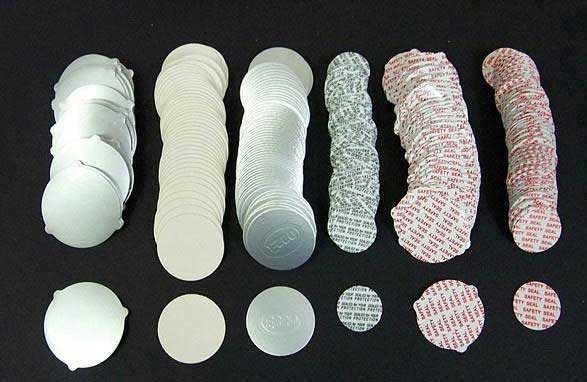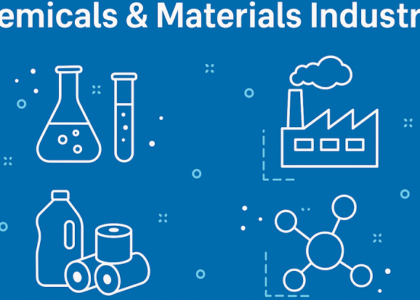By the year 2030, the heat induction cap liners market is poised to achieve a significant milestone, reaching a substantial worth of US$ 1,020 million, with a notable growth rate of 5.5%. This expansion is indicative of the increasing adoption of heat induction cap liners across various industries, driven by their ability to provide secure sealing and tamper-evidence for packaged products. Additionally, advancements in packaging technologies and the growing emphasis on product integrity and consumer safety are further fueling the demand for heat induction cap liners. As a result, manufacturers are expected to witness lucrative opportunities in the global market landscape.
Key sectors including pharmaceuticals, food and beverage, and others are expected to sustain their demand for heat induction cap liners, seeking reliable solutions to safeguard products from contamination and prevent leakage. This persistent demand underscores the crucial role played by heat induction cap liners in ensuring the integrity of packaged goods, especially in industries where product safety, freshness, and tamper resistance are paramount. As these verticals prioritize secure packaging, the heat induction cap liners market is poised to remain robust, with manufacturers catering to the diverse needs of these sectors, reinforcing the liners’ significance in preserving the quality and safety of packaged contents.
Maintaining its dominant stance, North America is poised to lead the global heat induction cap liners market over the next decade, projecting a substantial market share of nearly 25%. This prevalence is attributed to the region’s significant concentration of key players and the adoption of advanced technologies in the manufacturing and application of heat induction cap liners. The robust market presence in North America underscores the region’s pivotal role in shaping industry trends and innovations, contributing significantly to the overall growth and advancements within the heat induction cap liners market on a global scale.
Request Sample Report Here: https://www.futuremarketinsights.com/reports/sample/rep-gb-6944
Market Drivers:
- Increasing Demand for Tamper-Evident Packaging: With growing concerns about product safety and authenticity, there’s a rising demand for tamper-evident packaging solutions. Heat induction cap liners provide an effective seal that ensures the integrity of the product, driving their adoption across various industries such as pharmaceuticals, food and beverages, and cosmetics.
- Stringent Regulatory Requirements: Regulatory bodies are imposing stricter regulations regarding packaging materials to ensure product safety and consumer protection. Heat induction cap liners meet these regulatory standards, leading to their increased adoption by manufacturers striving for compliance.
- Growing Preference for Extended Shelf Life: Heat induction cap liners help in preserving product freshness by creating a hermetic seal, which extends the shelf life of perishable goods. This is particularly crucial in industries like food and beverages, where maintaining product quality over an extended period is essential to meet consumer expectations.
- Rising Focus on Sustainability: As the global awareness of environmental issues increases, there’s a shift towards sustainable packaging solutions. Heat induction cap liners, often made from recyclable materials, align with this trend, making them a preferred choice for environmentally conscious consumers and businesses.
- Advancements in Packaging Technology: Ongoing innovations in packaging technology have led to the development of advanced heat induction cap liners with improved sealing properties, compatibility with various packaging materials, and enhanced performance, driving their adoption across different industries.
Market Restraints:
- Cost Considerations: Despite their effectiveness, heat induction cap liners can add to the overall packaging costs, especially for products with high volume production. This cost factor can restrain their adoption, particularly for budget-conscious manufacturers operating in price-sensitive markets.
- Compatibility Issues: Heat induction cap liners may not be compatible with all types of packaging materials or container shapes. This limitation can hinder their widespread adoption, particularly in industries where diverse packaging requirements exist.
- Complex Application Process: Applying heat induction cap liners requires specialized equipment and expertise, which may pose challenges for some manufacturers. The complexity of the application process can deter adoption, especially for small or medium-sized businesses with limited resources for investing in equipment and training.
- Potential for Seal Failure: While heat induction cap liners offer effective sealing, there’s still a risk of seal failure due to factors such as improper application or defects in the packaging material. Instances of seal failure can lead to product spoilage, contamination, and loss of consumer trust, posing a significant concern for manufacturers.
- Alternative Packaging Solutions: The availability of alternative packaging solutions, such as pressure-sensitive seals or shrink sleeves, provides manufacturers with options beyond heat induction cap liners. Depending on specific requirements and preferences, some businesses may opt for these alternatives instead, impacting the demand for heat induction cap liners.
Some of the key takeaways from the report are:
- The heat induction cap liners market is poised to surge at above 5.5% CAGR between 2022 and 2030
- Among materials used, plastic will account for more than half of the market. Paper however will constitute the fastest growing segment
- While demand in pharmaceutical packaging is forecast to surge, the food segment will continue leading the market through the forecast period
- Macroeconomic factors rising willingness to spend and focus on environmental impacts will augur well for the market
- North America is likely to remain a key market through the course of the forecast period
Some of the leading companies are dedicating their resources towards product development to gain competitive advantage. FMI’s report includes profiles of some of the most prominent names in the market including
- Tekni-plex, Inc.,
- Selig Group,
- Bluemay Weston Limited,
- B&B Cap Liners LLC,
- Pres-On Corporation,
- Low’s Capseal Sdn Bhd,
- Well-Pack, industries Co., Ltd.,
- Tien Lik Cap Seal Sdn. Bhd,
- Captel International Pvt Ltd., and
- others.
Buy Now/Purchase: https://www.futuremarketinsights.com/checkout/6944
Key Segmentations:
by Material:
- Rubber
- Metal (foil)
- Plastic
- Paper
by Application:
- Bottles
- Jars
by End-user:
- Food & Beverages
- Pharmaceuticals
- Cosmetics & Personal Care
- Homecare
- Chemicals & Fertilizers
About Future Market Insights (FMI)
Future Market Insights, Inc. (ESOMAR certified, recipient of the Stevie Award, and a member of the Greater New York Chamber of Commerce) offers profound insights into the driving factors that are boosting demand in the market. FMI stands as the leading global provider of market intelligence, advisory services, consulting, and events for the Packaging, Food and Beverage, Consumer, Technology, Healthcare, Industrial, and Chemicals markets. With a vast team of over 5000 analysts worldwide, FMI provides global, regional, and local expertise on diverse domains and industry trends across more than 110 countries.
Contact Us:
Future Market Insights Inc.
Christiana Corporate, 200 Continental Drive,
Suite 401, Newark, Delaware – 19713, USA
T: +1-845-579-5705
For Sales Enquiries: sales@futuremarketinsights.com
Website: https://www.futuremarketinsights.com
LinkedIn| Twitter| Blogs | YouTube



